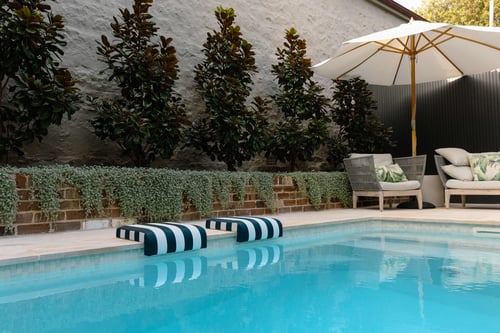Prefab construction has earned a reputation for being faster and more cost-effective than traditional construction methods. Homeowners and builders may not know that the workplace health and safety benefits of prefab are equally as exciting. The latest report from Safe Work Australia found that there were 16,088 serious injury and disease claims in the construction industry in 2021. With an average of 6.2 working weeks lost per claim, workplace injuries can cost workers thousands in income and set a project back months. We’ll discuss the ways that prefab can help make your construction site safer and help your project run smoothly.
Reduced Manual Handling
The number 1 cause of injury on construction sites is body stressing due to carrying, lifting and putting down objects. Prefab construction helps mitigate the risk of body stressing by reducing manual handling on-site. For example, if prefab concrete panels are used in a project, there’s no need for the manual handling of formwork. The simplicity of prefab systems is particularly beneficial for less experienced workers, who are more likely to injure themselves due to improper lifting techniques.
With an average employee turnover rate of 21.4% across the industry, prefab may soon be necessary to compensate for the lack of experience on-site. Interestingly, the majority of employee turnover is due to workplace injuries. With all of its safety benefits, prefab could just be key to keeping construction workers in the industry for longer.
Less Slips, Trips and Falls
According to Safe Work Australia’s Construction Report, 28% of on-site injuries are caused by slips, trips and falls. Working in a controlled factory environment removes factors that can cause these injuries like uneven terrain and wet weather conditions. Prefab construction produces less material waste than traditional construction, so there’s also less risk of workers tripping on debris. Surprisingly, 14% of workplace injuries occurred when workers were hit by moving objects. By simply reducing the number of workers required on-site, prefab construction reduces exposure to these hazards.
Fewer Falls From Height
Falls from height are the leading cause of death in the Australian construction industry. Prefab construction offers an opportunity to change this. A UK study found that falls from height were the cause of 50% of fatalities in traditional construction, compared to 16% of fatalities in manufacturing. Off-site manufacturing is safer in this respect as more construction work can be completed at ground level. On top of this, prefab structures can be assembled quickly once they arrive on-site, so less time is spent working at height overall.
Higher Quality Structures
There’s a misconception that prefab homes are less sturdy than stick-built homes, but this simply isn’t the case. Prefab structures must meet strict building code regulations, so homeowners can be sure they’re safe. It’s also much easier to control quality in a factory environment.
At Plungie, off-site construction gives us the ability to assess quality at each stage of the production process. If our in-house quality assurance team finds a pool that isn’t up to scratch, it won’t move to the next stage of production until it’s brought up to standard.
As such, homeowners and builders can feel confident that they are receiving a reliable, high-quality product. Read our article about how prefabrication can improve quality in construction to learn more.
Health And Safety Shouldn’t Go Out The Window
Even though prefab construction reduces the risk of accidents and injuries, workplace health and safety cannot be ignored. When production is moved off-site, some of the on-site risk is transferred to the factory setting. Prefab companies must therefore invest in training and have clear workplace health and safety plans in place. After all, you can’t put a price on the safety of your team.



